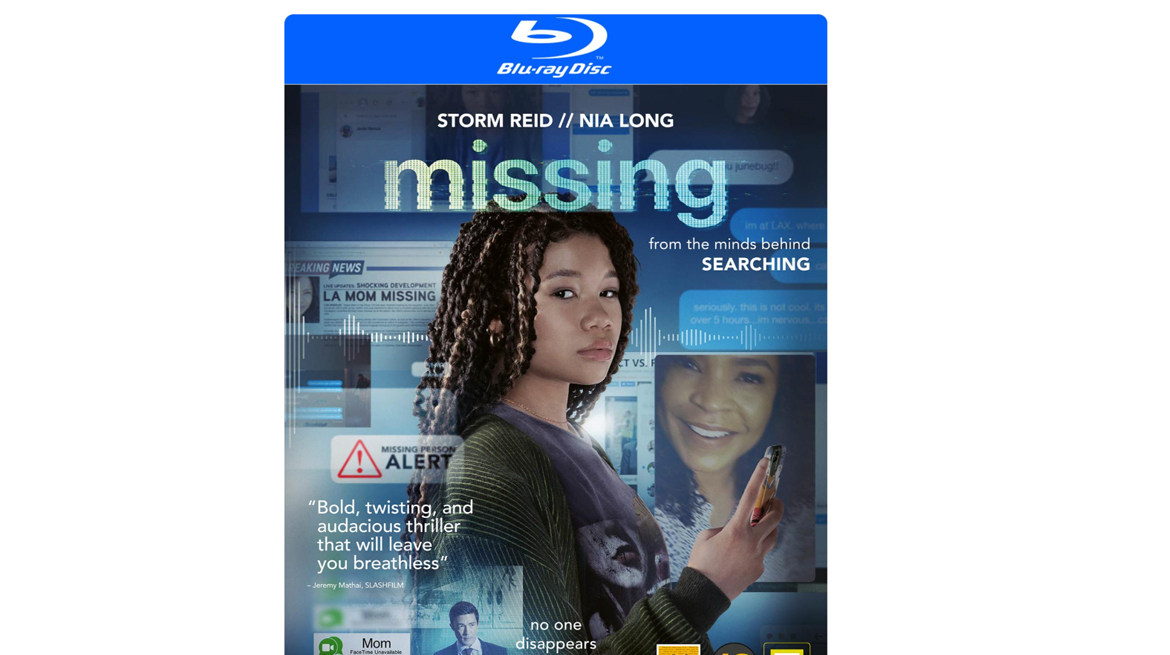TL;DR
Think *Searching*, but with a new mystery! *Missing* drops you into June's frantic search for her missing mother, all from her computer screen. Despite initial doubts about the "Screenlife" format, this thriller is a masterclass in clever storytelling, keeping you glued to every click and video call. While the ending might lean a bit predictable, the journey is a suspenseful ride with a surprisingly well-justified reason for all the self-filming. Want to know if this digital detective story is worth your time? Read on for the full review!
In Missing, we are introduced to June (Storm Reid), who shares a somewhat strained relationship with her mother, Grace (Nia Long). When Grace embarks on a romantic getaway to South America with her new boyfriend, Kevin (Ken Leung), June seizes the opportunity to indulge in some solitary revelry. Upon attempting to collect them from the airport, June discovers that neither has arrived. The realization slowly dawns upon her that something untoward has occurred during her mother’s trip, and she must uncover the truth.
Missing serves as a sequel to Searching, which premiered in 2018; however, none of the characters from the original film appear in this installment. Nevertheless, the films share several connections. Both Searching and Missing are examples of Screenlife films, meaning the entire narrative unfolds on a computer screen. We observe the character’s keystrokes as she searches for information and follow her actions via FaceTime video cameras. Certain sequences forego video altogether, focusing instead on her active search for information. While the concept might initially seem limiting, and admittedly, I initially harbored similar reservations after viewing the trailer, believing it unsustainable for a feature-length film, my concerns proved unfounded.
Missing exhibits an exceptionally clever construction. The film music is essentially the sole cinematic element that doesn’t originate from her computer, contributing significantly to the film’s pacing and atmosphere. The filmmakers have also convincingly addressed the question of why June records herself in various situations. For instance, she films herself while awaiting her mother and her boyfriend at the airport, a scenario that typically requires justification. This is achieved by showing her viewing an Instagram clip of someone jokingly welcoming their mother home from rehab with a sign. June, in turn, mimics this by creating a sign that reads “Welcome home from prison,” providing a logical rationale for her self-filming and allowing the audience to witness the absence of her expected arrivals.
The film’s runtime of 110 minutes feels considerably shorter, as Missing maintains a consistent and engaging flow. The narrative delivers a series of twists; however, despite the effectiveness of most, the film’s conclusion falters somewhat. This is partially due to a few twists that feel excessive and a resolution that unfortunately relies on familiar clichés.
The audio is presented in DTS 5.1 HD Master Audio. Given the film’s entirely screen-based setting, the sound is predominantly front-focused. Nevertheless, the audio quality is satisfactory and serves its intended purpose. Assessing the visuals is challenging due to the constant close-ups of different screen elements, resulting in a picture quality that is inherently tied to that format. However, all text elements are sharp and clear, revealing additional details in the background upon pausing.
The Blu-ray edition includes a substantial amount of supplementary material that offers considerable insight into the film’s production. The content is informative and explores the subject matter in some depth. Deleted scenes are also included, providing further context to the film’s creative process.
In conclusion, I highly recommend Missing. This film proved to be a consistently pleasant surprise. Given the quality demonstrated in this production, Screenlife films are likely to emerge as a popular and diverse genre.
SF Studios provided review copies for this evaluation. Provision of these materials does not influence our editorial independence. Our reviews are conducted with the interests of our readers and consumers as our primary focus.
SF Studios provided review copies for this evaluation. Provision of these materials does not influence our editorial independence. Our reviews are conducted with the interests of our readers and consumers as our primary focus.

